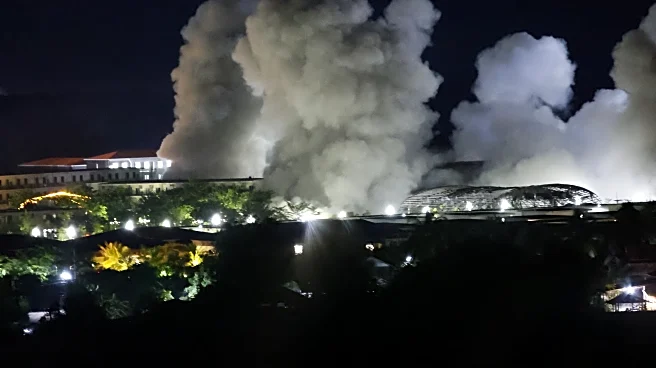What's Happening?
Next-gen insurgency is evolving to be networked, swarming, and global, focusing on narrative-centric conflict and integrated cost imposition. Social media and the virtual world are becoming central battlespaces.
Insurgency is seen as a strategy rather than a type of war, with insurgents using protracted violence against power structures. The enduring nature of insurgency involves exploiting grievances and schisms to weaken power structures, while its changing character reflects trends in technology, politics, and social structures.
Why It's Important?
Understanding the evolution of insurgency is crucial for states and their security forces to prepare for future conflicts. Next-gen insurgency poses a threat to states developed enough to be dependent on global connectivity and technology but unable to eradicate insurgents. The strategic environment and nature of conflict are undergoing rapid change, requiring states to think about what insurgency will be rather than what it has been. This preparation is essential to prevent insurgency from gestating and becoming a more dangerous and destructive conflict.
What's Next?
States and their security and intelligence services must innovate and reconfigure quickly to confront next-gen insurgency. This involves developing technology-based intelligence capabilities and adapting to new modes of conflict. Next-gen insurgency will be heavily virtual, with commercial technology dominating over manufactured arms. Fundraising will occur through dark web contributions and cybercrime. States must prepare for a global swarming and adaptation of new technology and modes of conflict.
Beyond the Headlines
Next-gen insurgency will focus on the negative dimension of degrading the state's power and delegitimizing its power structure rather than winning popular support. It will not be a contest for 'hearts and minds' but will emphasize attacking and delegitimizing opponents. The narrative war in next-gen insurgency will be global rather than localized, with insurgents exploiting existing grievances and schisms to weaken power structures.












